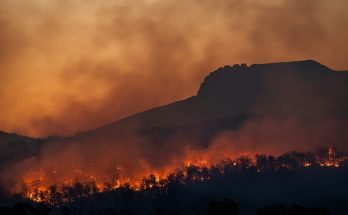World Environment Day can be traced back to a warm June in Stockholm, Sweden 50 years ago. That’s when the United Nations Conference on the Human Environment took place. Widely regarded as the first global environmental summit, it was here that the idea of a World Environment Day was formalized, with the first one held in 1973.
Since then, the annual event, which falls on 5 June, has helped both celebrate the planet and put a spotlight on the perils it is facing. Experts say it has also driven change, helping lead to landmark global treaties that cover everything from plastic pollution to food waste.RELATED
“World Environment Day provides a platform on which to come together for collective action,” said Atif Ikram Butt, the Chief of Public Advocacy and Communication at the United Nations Environment Programme (UNEP). “It helps to amplify voices and strengthen participants’ agency to impact change.”
World Environment Day came into being during a time of growing concern about humanity’s impact on the planet. A series of environmental disasters in the 1960s –from drought and mine collapses to pollution and mass fish poisoning– raised awareness of the fragility of the environment. That fragility was illustrated by the iconic ‘Earthrise’1972 photo of the Earth taken by the Apollo 8 mission – the first colour photo of our planet from space.
Sweden is this year’s World Environment Day host and the theme is Only One Earth, focusing on the need to live sustainably in harmony with nature. It is a nod to 1972’s UN Conference on the Human Environment and a reminder that the planet’s resources are both finite and dwindling.https://www.youtube.com/embed/_CIPLOajR58
Past World Environment Day themes are a snapshot of the environmental concerns of the time. In 1977, for instance, the event focused on the depletion of the ozone layer, and in 1983 on acid rain. While some of those threats have been overcome, others linger. World Environment Day cast a spotlight on climate change in 1989.
Martina Otto, Head of the Secretariat of the Climate and Clean Air Coalition, has been involved in 23 World Environment Days since she joined UNEP in 1999. For Otto, World Environment Day is both a call to action and a celebration.
She notes that in some instances, World Environment Day has also preceded global change. Otto credits the 2018 day with sparking a global dialogue about the mounting toll of plastic pollution, about 7 billion tonnes of which has been jettisoned into the environment since 1950. Earlier this year, world leaders committed to creating a legally binding international treaty to end plastic pollution.

Past World Environment Days have focused on everything from air pollution to food waste, and each year has seen an increase in the number of people – both on and offline – participating.
For example, 2019’s World Environment Day – hosted by China, with a focus on air pollution – saw more than 12 million hashtags marking the day on Twitter and on the Chinese social media site Weibo.
2020’s World Environment Day – hosted by Colombia and focused on biodiversity – saw even more engagement. UNEP’s Time #ForNature campaign garnered more than 100 million views on UNEP’s social channels. Snapchat also created a special World Environment Day augmented reality lens for its hundreds of millions of users globally.

The buzz online was reflected by real policy progress. Fourteen world leaders – including those from Colombia, Costa Rica, Finland, France and Seychelles – released a statement on World Environment Day, calling on governments worldwide to support a new global goal to protect at least 30 per cent of the planet’s land and ocean by 2030.
This year’s World Environment Day comes with the planet facing a triple crisis of climate change, nature and biodiversity loss, and pollution and waste. As those crises have become more acute, World Environment Day’s message has gotten more urgent.
This year’s iteration is expected to feature hundreds of events and actions around the world, from an electric vehicle rally in Cairo to a massive cyclathon in Mumbai to an e-waste drive in Bucharest.

Experts say it is clear that urgent, transformative action is required to halt the decline of the natural world. To support this UNEP has produced the #OnlyOneEarth Practical Guide, a compass providing governments, cities, businesses, community groups and individuals with key environmental actions they can take to effect real change.
“We have to understand that we just have this one world, this one planet,” said UNEP Executive Director Inger Andersen last week. “We have to move together [and] reach for that long-term sustainability.”
About World Environment Day
World Environment Day on 5 June is the biggest international day for the environment. Led by UNEP and held annually since 1973, the event has grown to be the largest global platform for environmental outreach, with millions of people from across the world engaging to protect the planet. Take part in Earth Action Numbers, put your environmental actions and events on the interactive world map, and share your personalised social media cards on your channels.
Tune in to live updates to keep informed about events happening near you, and be sure to catch the live broadcast from Sweden and Nairobi on 5 June.
#WorldEnvironmentDay; #UNEP; #OnlyOneWorld; #ClimateChange; #BiodiversityLoss; #Pollution





